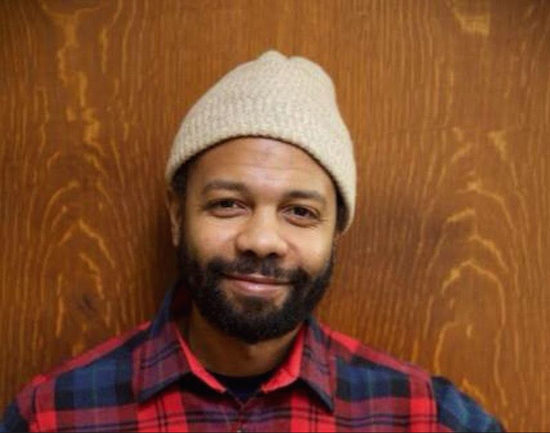Interview with Javaka Steptoe: ‘Art Outside the Lines’
Brooklyn BookBeat

My interview with Brooklyn-based artist and illustrator Javaka Steptoe coincidentally occurred the same week I saw the Kerry James Marshall exhibition at the Met Breuer and Barry Jenkins’ film “Moonlight” at the BAM Rose Cinemas. And therein lies a tale…
In 1955, Simon & Schuster published a 112-page paperback called “The Sweet Flypaper of Life,” with text by Langston Hughes and black and white photographs by Roy DeCarava. The cover featured the soulful eyes of an African-American child. Although the volume was slim, in the 60-plus years since its publication “The Sweet Flypaper of Life” has influenced painters, musicians, filmmakers and photographers. In 1996, Jazz at Lincoln Center held a symposium with Roy DeCarava and Spike Lee, in which Lee showed scenes from several of his films (“She’s Gotta Have It,” “Do the Right Thing,” “He’s Got Game”) in which DeCarava’s photographs served as the visual template. DeCarava, who died at 89 years of age in 2009, was — along with James Van Der Zee, who was a leading figure of the Harlem Renaissance best known for his photographs of the neighborhood’s growing middle class and who died at age 96 in 1983, and Gordon Parks, who was a Life magazine photojournalist of the 1940s through 1970s and who died in 2006 at the age of 93 — the pre-eminent African-American photographer of the 20th century. [All lived into their late 80s and 90s, testament to their creative energy, stamina and spirit.]

Brooklyn Boro
View MoreNew York City’s most populous borough, Brooklyn, is home to nearly 2.6 million residents. If Brooklyn were an independent city it would be the fourth largest city in the United States. While Brooklyn has become the epitome of ‘cool and hip’ in recent years, for those that were born here, raised families here and improved communities over the years, Brooklyn has never been ‘uncool’.